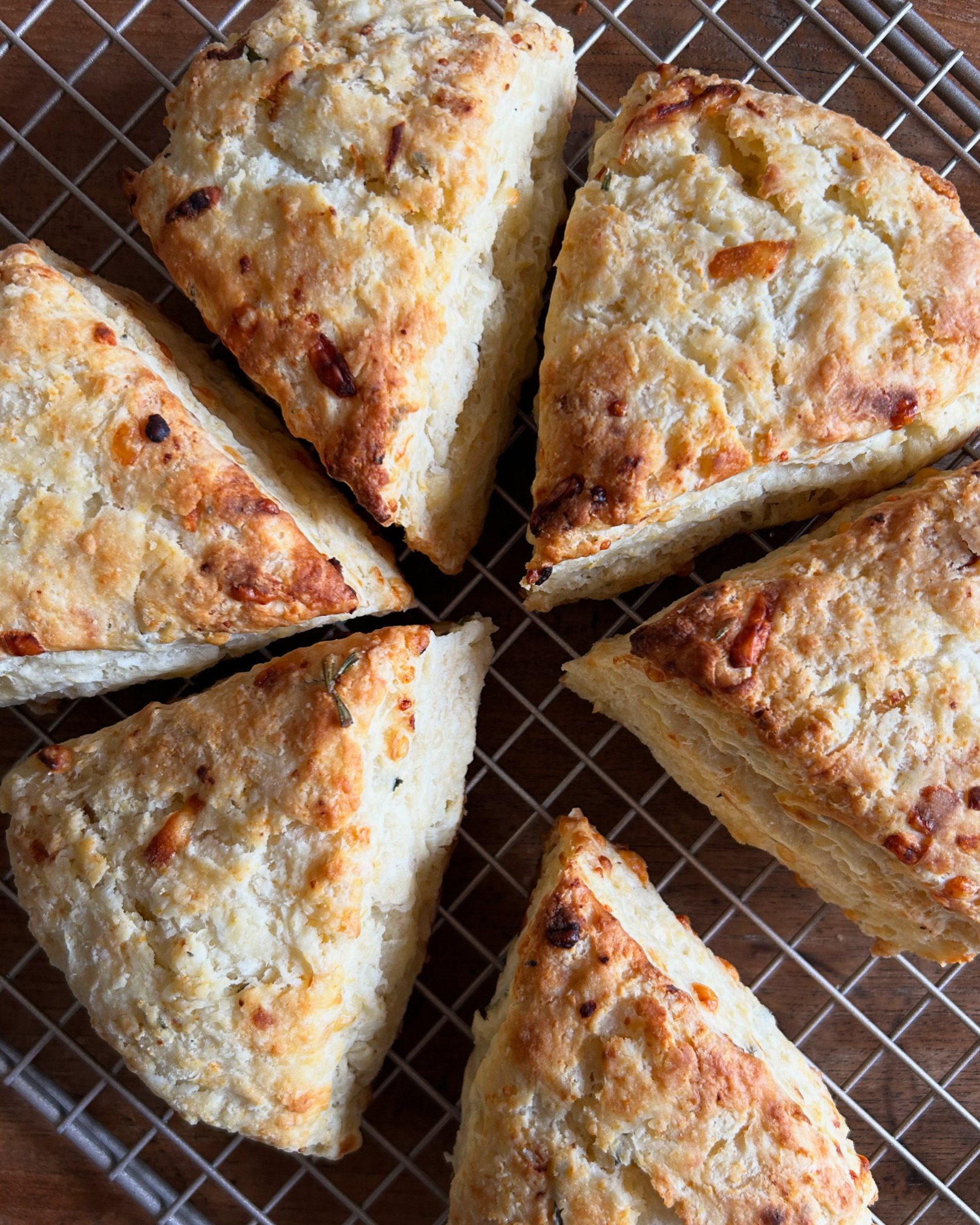Sunflower Rye Bread
Published: April 13, 2024.
This post may contain affiliate links, please see our privacy policy for details.
This Simple No-Knead Sunflower Rye Bread has a hearty, chewy texture ideal for toast and sandwiches. It's a quick rise with a nutty, slightly tangy flavour and it freezes beautifully!
When we were kids, rye bread was a treat reserved for when family came out from the city to visit. Served with cold cuts, mustard or thousand island dressing, coleslaw and pickles, it turned each meal into an occasion – made all the better if potato chips were involved. This is my take on that beloved classic.
Why Bake with Rye Flour?
Adding rye flour can upgrade almost any bread recipe and there are several benefits.
Most rye flours contain less gluten and are higher in fibre and micronutrients, including B vitamins, resulting in a more satisfying and nutritious bake.
Substituting 25-33% medium to dark rye flour will produce a more rustic, richly coloured loaf.
Rye flour, especially dark rye, adds a complex, nutty flavour and enhances the chewy texture of artisan loaves.
Greater moisture retention means your loaf will stay fresh longer.
Things to Note When Baking with Rye Flour
Rye flour absorbs water more quickly, especially when baking yeast bread. This is resolved by increasing the amount of water and adding oil for moisture.
Because rye flour is lower in gluten, the more you add the more your dough will spread producing a flatter loaf with reduced oven spring.
Rye blends left to ferment too long can result in a sticky, almost gummy-like texture in the final bake.
This fiber-rich loaf is a quick rise that combines dense, low-gluten rye flour with bread or all-purpose flour for a lighter, more airy loaf than traditional rye bread recipes. It’s lightly sweetened with honey and has a moist, tender crumb thanks to the olive oil. The caraway seeds lend a citrusy tang while the sunflower seeds add protein and texture.
Made in a single loaf pan, this sunflower rye is hearty and filling with a nutty, earthy flavour profile. Absolutely delicious when simply toasted with butter, it’s the perfect pairing for jammy preserves, smashed avocado, smoked salmon and cream cheese or used as a base for my Best Tuna Salad recipe.
Homemade Sunflower Rye Bread
Makes 1 loaf; prep time 4.25 to 5.25 hours.
Ingredients:
1¾ cups (395 grams) water, room temperature
2 tablespoons (42 grams) liquid honey
2 teaspoons (6 grams) active dry yeast (not instant)
3 cups (390 grams) bread, whole wheat or all-purpose flour
1 cup (100 grams) rye flour, dark or light
2 teaspoons (6 grams) kosher or fine sea salt
2 teaspoons (6 grams) caraway seeds
½ cup (25 grams) raw or roasted sunflower seeds
2 tablespoons (28 grams) extra-virgin olive oil, divided
Butter or vegetable oil for greasing the pan
Instructions:
Add the honey to the water and whisk together. Add active dry yeast and let sit for 10-15 minutes.
In a large mixing bowl, whisk together flours, salt, caraway and sunflower seeds. Pour in the yeast mixture and half the olive oil. Using a rubber spatula, mix together all ingredients until a sticky ball is formed and no flour bits remain.
Cover and let dough rise somewhere warm until it has doubled in size, about 2-3 hours. It will be sticky and well-hydrated.
Once the dough has doubled, lightly butter a loaf pan. Drizzle the remaining tablespoon of olive oil across the top of the dough and brush it over the surface to coat. Using your hand or a dough scraper, pull the dough out onto a lightly floured surface, oiled side down, and shape it into a loaf. Lift and transfer dough into prepared loaf pan. If needed, lift each end from the middle and gently stretch it into the corners so the dough fills the pan.
Set aside, uncovered, and let rise for another hour. As it rises, you’ll start to see bubble formation and the top will smooth out.
When you’re ready to bake, preheat oven to 375ºF (190ºC) then bake for 45 minutes until the top is browned and it sounds hollow when you tap on the top. Turn loaf out onto a wire cooling rack and let cool for an hour before slicing to allow the cooking process to complete.
Notes:
Loaf pan: If using an 8.5 x 4.5-inch pan, the dough should rise above the edge of the pan during the second rise and result in a slightly taller loaf. Using a 9 x 5-inch pan will produce a wider, slightly flatter loaf.
Storage: Bread will keep well sealed on the counter for 3-4 days or in the fridge for up to a week. Sliced bread will freeze well in an airtight container or freezer bag for several months.











